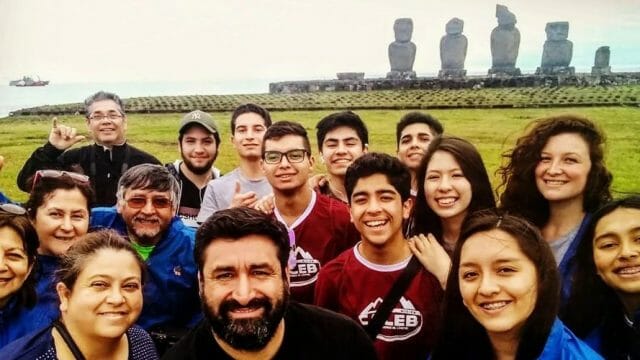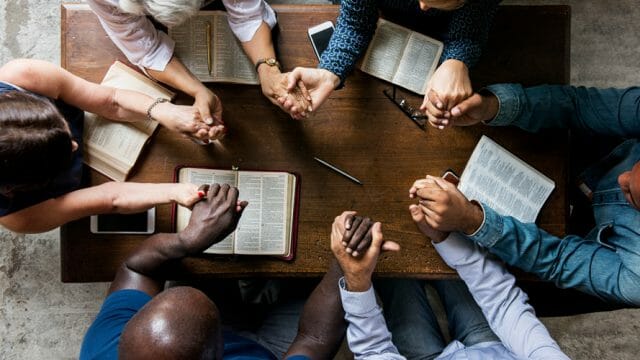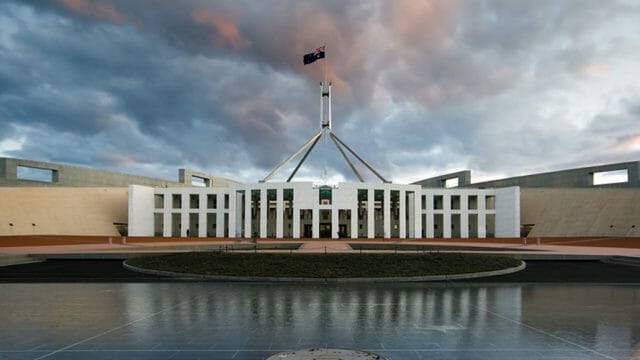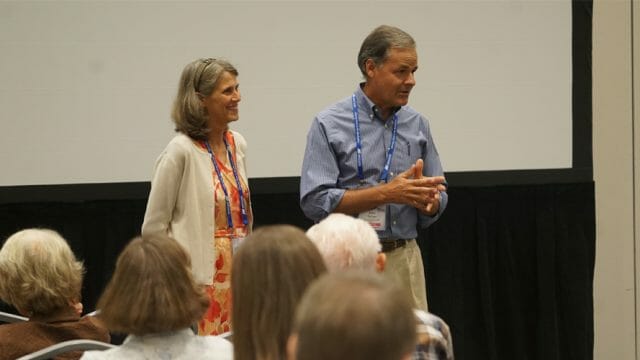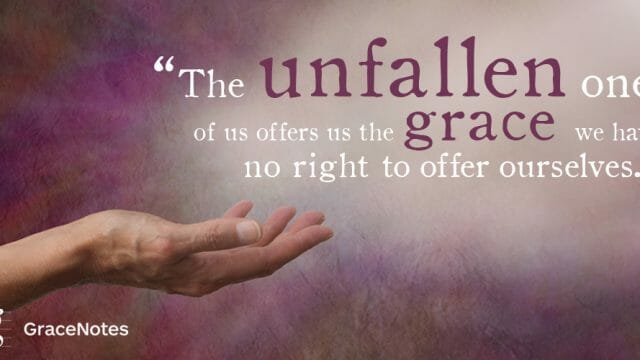Connecting the dots between life, faith, peace, and meaning
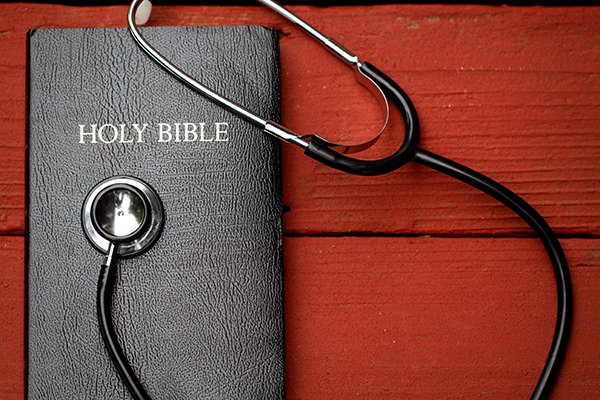
“When properly conducted, the health work is an entering wedge, making a way for other truths to reach the heart.”1
I am a Seventh-day Adventist head-and-neck surgical oncologist. Our church rightfully places significant emphasis on medical mission work. Jesus Himself was the Great Physician, and His healing ministry was an integral part of His soul winning. Certainly, medical ministries combined with the gospel truth lead many people to salvation. I have learned, however, that medicine can also affirm the faith of someone who is already a believer. Like a church, the halls of a hospital are often hallowed by God’s presence; and even when broken, the human body—like “the heavens”—still shouts out the glory of God.
Briefly, I would like to share two stories from early in my medical experience that made me aware of God’s presence. These are not miracles, just simple events that made an impression on me. And as a believer reflecting on these events, and on others like them, my faith has been strengthened.
A Potent Moment
The first of these happened near the end of my residency. As part of a team of surgeons, I was helping perform a rare surgical procedure called a total laryngopharyngoesophagectomy with a gastric transposition. The patient was a 40-year-old man with an aggressive cancer that had taken root in his throat and was creeping down into his esophagus. He had already been treated with chemotherapy and radiation, but his cancer had stubbornly resisted. This surgery was his last hope.
I knew this man from his previous clinic visits, where we had talked, and despite his prognosis, even laughed together. He faced it all bravely.
Not only the name of the surgery was complicated—so were the technical details. Stated simply, his voice box, pharynx, and esophagus were removed, and then his stomach was pulled up through his chest and sutured to what remained of his throat so he could still swallow.
We had a particularly difficult time getting the empty bag of his stomach to slide behind his lungs and heart and into his neck. We took turns trying to coax it up, but when at last the pressure of our groping arms on his heart and lungs caused his pulse and oxygen levels to plummet, we would be forced to stop and give his vital organs time to recover before attempting it again.
I still perfectly remember that at the end of one of my attempts, after I had let the slippery stomach slide back into his abdominal cavity, I left my hand in his chest and gently grasped his beating heart. It writhed and contracted with surprising force. In a transcendent moment, it was as if a portal opened between us. Suddenly, I was overwhelmed by an indescribable feeling of reverent awe intermixed with a strange intimacy—a feeling that to this day I can still recall with vivid clarity.
As a head-and neck-surgeon, the heart is an organ I rarely encounter. But as potent of a symbol of life as the heart is, it wasn’t the heart itself that sent me into this strange reverie. It was, I thought afterwards, the simple fact that this beautiful living machine, on which we crudely operated, housed within it a man’s soul.
* * *
“The heavens declare the glory of God; and the firmament shows His handiwork” (Ps. 19:1).2
But alas, not only awe can take your breath away. In a very different way, so can tragedy.
A Face Etched in Grief
My second story happened even farther back, when I was a third-year medical student. It took place late at night, this time beneath the fluorescent lights of a Los Angeles County hospital trauma bay. At that point in my career, the newness of standing constantly in the shadow of life and death was still beyond awesome, which resulted in the impressions being etched all the deeper.
The trauma report alerted us, matter-of-factly, of an incoming single-vehicle rollover, involving a mother and her five children. There were multiple fatalities.
It was a busy night, and we were already in the trauma bay, but we dutifully noted the details and waited for the accident victims to come rolling on their gurneys through the glass doors, bringing with them the chaos of all they had been through. The moment they arrived, we quickly divided into teams to perform the ABCDE’s of trauma on each of the victims. Airway, Breathing, Circulation, Disability, and Exposure—a handy way of remembering what was important when it comes to saving a life, but none of which ultimately mattered for the little girl I worked on.
She was only 9 years old, chubby, and cherub-faced. She had suffered a closed-head injury, and there was no blood on her—not even a drop. I half expected her to sit up and smile at us, but the only movement her little body made was the violent rise and fall of her chest as we took turns counting out the compressions. We did CPR, placed lines, shocked her, and pumped her full of drugs. Nothing. Finally death was declared.
We learned that the mother, who was a single parent, had been driving her sleeping children home from a midweek church prayer meeting, when suddenly swerving to avoid something in the road she had rolled their minivan. Three died, one was severely injured, and one had only a few fractures. The mother had no injuries at all, at least none that could be detected by a medical test. Nevertheless, it was easy to see that her heart had been gravely wounded.
The next morning on rounds I stopped and stood silently at her door, watching. She didn’t know I was there. The light caught her face, and every line of it was etched with grief as she stared tearless and empty-eyed out the window into a world that would never be the same for her again. It seemed as if her pain was a shoreless ocean that the whole world could drown in. It’s her face I remember, and I still cry when I picture it.
As a physician, over the years I have collected many other moments like these. Awe, pain, and a host of other emotions color each of them. For an atheist, events of this sort are no more than the byproducts of nature’s indifferent laws. But for a believer, they are evidence of God—His footfalls echoing in the chambers of our souls.
The Mystery of Life
Let me explain. And in doing so, let me reflect on the two stories I have shared. All people, regardless of creed, live by faith. Each of us makes conclusions about where life came from and what it means based on the limited information we have. Practicing medicine is a constant reminder of how limited that information is. Despite all we have learned, the human body remains a deeply shrouded mystery. And beyond the mysteries of physiology, biochemistry, and other such disciplines, is the mystery of life itself. From where did that first spark come?
Much of the modern scientific world has decided that evolution is the great giver of life, the driving force behind all living things. It is said that these bodies of ours, and the hearts and souls they house, arose by chance. In a hostile universe filled with radiation, poison, flaming infernos, and unimaginable cold, a soup of chemicals self-animated, and then over eons became incredibly and improbably complex. Or so it is claimed.
I am not an ivory-towered theologian nor a scientist in a lab. I cannot criticize or defend arguments that greater men than I have made. I can speak only from my experience. As a surgeon, I know life. I have felt its fluttering frailty, been awed by its complexity, and grieved its passing. Scientific progress has been tremendous, but when it comes to the question of life, we have no answers. Humans have never created life. And they never will. God is the only Source.
* * *
“The Spirit of God has made me, and the breath of the Almighty gives me life” (Job 33:4).
Even in the most controlled lab, with all of life’s building blocks at our disposal, we cannot animate the simplest organism. For us, the chasm between life and death is uncrossable. And although not a drop of blood was on her, there was no way for us to bring back the little girl that night in the emergency department. Her life had returned to God from whence it came. And the heart that I had cupped in my hand—rightly appreciated, each beat was no less than an act of God.
Life gives me faith. In turn, my faith is a great source of peace. Peace, because God imparted life, and this adds meaning to our existence.
The question is often asked: How can a good God allow pain? Medicine has taught me that we are asking the wrong question. What we should be asking is: How, with all the pain in the world, could there not be a good God? In a godless universe no accusations can be made, and no one can protest when a mother’s heart is shattered. Ultimately, in such a universe, her pain would be meaningless—no more than a cold fact of existence. And yet, anyone who glimpsed that mother’s face as I did, could not help but cry out that this was wrong. Only when God exists are the wrongs in this world a problem. Only with God does any of it matter. And taken a step further, only the cross provides an answer great enough to satisfy.
Our grief, our joy, our love—the things that make us human—may indeed serve a purpose and be explained both biologically and psychologically, but at the same time, they also scream of meaning. We matter! What we do, what we feel, and what we think—it matters. Beyond this, each of us, deep down, recognizes that we are accountable for the lives we lead. A moral law is written in our hearts.
Practicing medicine is a frequent reminder of these realities. Medicine indeed is a place where the gospel’s message and the reality of God’s existence can be clearly seen and understood. And as I have learned over the years, we may be no more than specks of dust in an infinite universe, but our lives and our experiences testify to a God who oversees it all.
God, I believe, holds us in His hands.
1 Ellen G. White, Testimonies for the Church (Mountain View, Calif.: Pacific Press Pub. Assn., 1901), vol. 6, p. 327.
2 Texts are from the New King James Version. Copyright ã 1979, 1980, 1982 by Thomas Nelson, Inc. Used by permission. All rights reserved.


